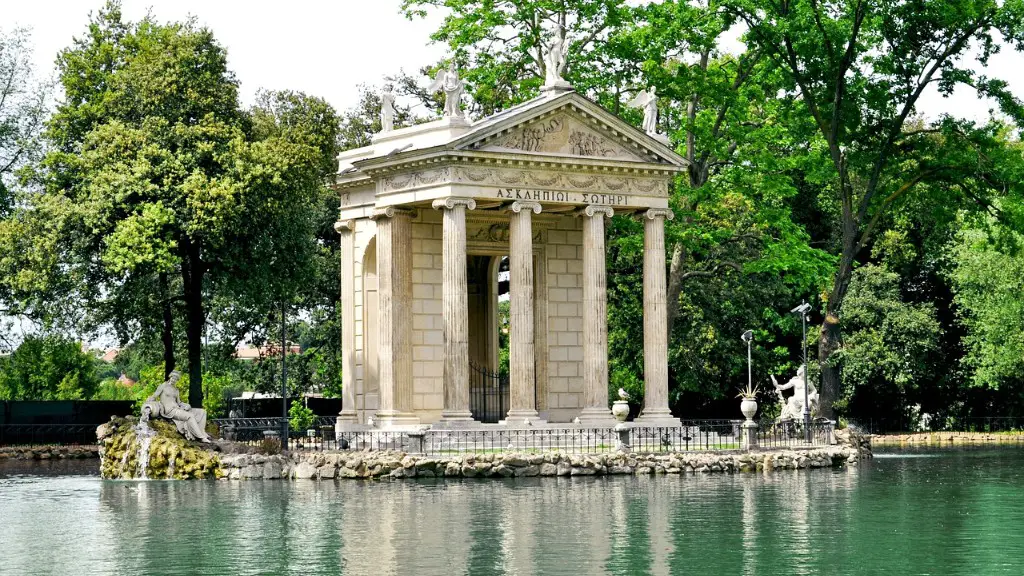Military
Ancient Rome’s military was unable to keep up with the continually changing tactics necessary to win battles. The influx of new peoples also necessitated bolstering its army’s numbers with random volunteers who didn’t have the same level of training and commitment as the seasoned and loyal Roman forces had enjoyed in centuries past. Furthermore, their military didn’t have access to advanced weapons or armor that their enemies possessed. Historians believe that while these factors alone may not have been enough to cause the downfall of Ancient Rome, they certainly weakened it, leaving the empire vulnerable to enemies on all sides.
The unorganized policies of Rome’s military, as well as its lack of unified leadership after the death of Julius Caesar in 44 BC, also slowed its ability to react to foreign enemies. Constantinople was simply better-equipped to withstand siege, partly due to its double line of walls, and the fact that it was located close to the powerful and well-armed Eastern Empire. This gave it the potential to outlast Rome’s long-term campaigns.
Politics
Internal politics and political strife also, historians say, were behind Rome’s eventual downfall. Growing corruption in the ruling classes and within the bureaucracy that ran the ruling Senate also robbed Rome of its former glory. Political in-fighting, assassinations and power struggles within Rome’s ruling elite weakened it and distracted its attention from looming external threats.
The influx of Christianity and the rise of the Christian Church was also a factor in the Roman Empire’s eventual demise. Traditional Roman gods were pushed into the background, as the Church sought to convert the population to Christianity and control the political order. This eroded the traditional understanding of Roman politics and their elitist attitude towards non-Romans, as Christianity sought to convert all, regardless of their former class or religious alignment.
Economy
The economy of ancient Rome was also heading towards disaster. Taxation and a weak currency helped bring about widespread poverty. As the Roman population grew, irrigation, drainage and transportation systems became inadequate, and people were unable to move goods and produce to vital markets.Trade and commerce declined, and in their place Rome’s opponents seized large areas of land within and beyond the empire’s borders.
To offset the decline in income, Roman authorities began to plunder the provinces and send the wealth back to Rome. The effect of this practise was that the provinces became more and more impoverished, weakening the ability of Rome to raise troops and defend its empire.
Lack of Social Unity
Ancient Rome lacked a great deal of the social unity necessary to keep a strong, unified empire together. Although an influx of new peoples slowly eroded traditional cultural and societal norms and allowed Rome to expand its boundaries, this increased diversity in turn weakened the unification of Ancient Rome.Racial, cultural, and even linguistic differences in the provinces served to further illustrate the disunity that ran rampant throughout the Roman Empire.
Another force that weakened the Roman Empire was the spread of expensive and wasteful lifestyle habits of the Roman elites. This erosion of financial stability encouraged public revolt and discontent. Additionally, increased rights for the non-elite threatened to handicap the authority of the elite and their control of the empire.
Barbarian Invasions
The fourth factor in the fall of the Roman Empire was barbarian invasions. These invaders, consisting of Visigoths, Gauls, and other Germanic tribes, invaded the empire over the course of centuries. Some of these attacks were this devastating that the Roman armies were unable to repel them.The last major invasion of Rome was by the Visigoths in 410 CE, who captured the city and sacked it. This event is often seen as the symbol of Rome’s eventual decline.
Failed Leadership
Disorganization of the government and the failed leadership of the early emperors weakened the Roman Empire. Beginning with Nero, a series of corrupt, inept, or overly powerful rulers either held too much or too little control over the Roman population. Furthermore, many of the successful rulers often left their positions too soon, never finishing their reforms or having the chance to appoint a worthy successor.The result was an inconsistent leadership, with no overseer or supreme ruler to take control.
Depopulation
Depopulation was also a factor in Ancient Rome’s decline. As its borders extended, more and more of its citizens were taken away to fight in foreign wars. This left a large swath of Rome’s able-bodied citizens dead or missing, lowering its birthrate and eventually leading to a decrease in its population.In addition, the introduction of foreign diseases decimated thousands of Roman citizens, leading to a weakened and stressed economy and society.
Inflation
Inflation was another factor that crippled the Roman Empire. Between the third and fifth centuries, the cost of living increased dramatically due to the debasement of Roman currency, causing food and basic items to become increasingly expensive. This led to widespread poverty and unrest among the lower classes.The resulting deprivation of the people’s ability to purchase basic goods, along with widespread corruption, caused widespread dissatisfaction and eroded the legitimacy of the government.


